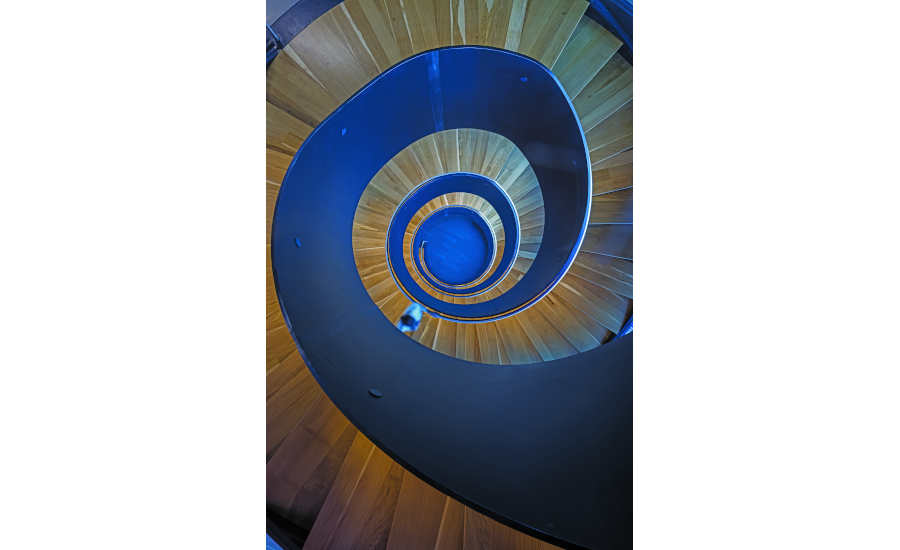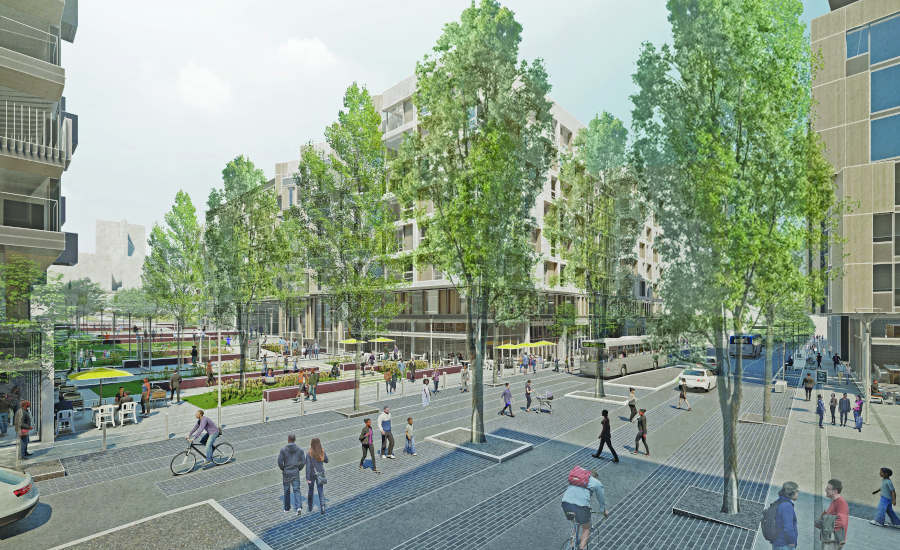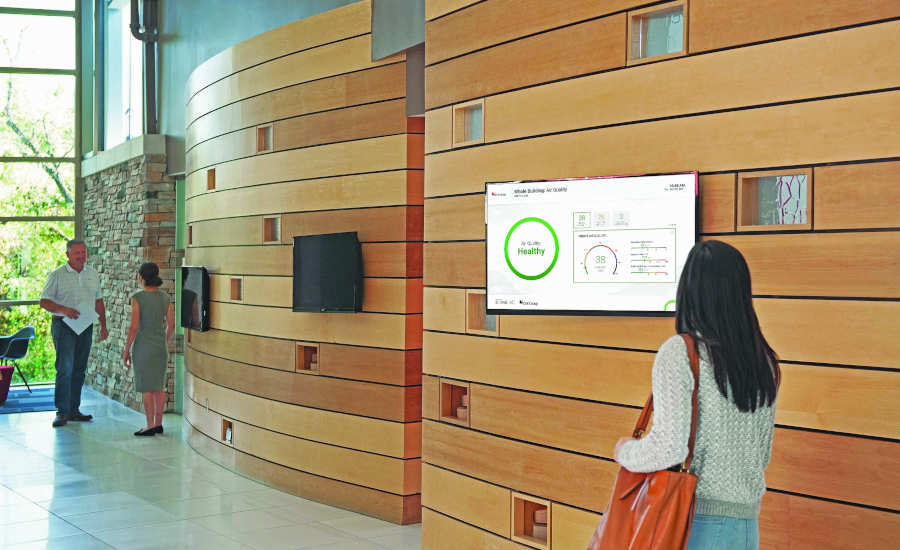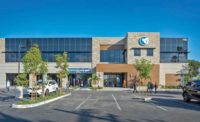To keep afloat in precarious times, a firm needs to be proactive, creative and flexible. In this past year, Los Angeles-based DLR Group not only remained afloat but also increased its regional revenue and innovated to meet pandemic needs by developing air-quality technology and reimagining workspaces. Those are among the reasons why the firm was chosen ENR California & Northwest’s 2021 Design Firm of the Year.
DLR Group, with 1,175 employees and offices around the globe, posted total revenue of $279.5 million for fiscal year 2020. For both California and the Northwest combined, DLR Group, with its 294 regional employees, reported revenue of $89 million from offices in Los Angeles, Sacramento, San Francisco and Riverside, Calif., as well as Seattle and Portland, Ore.
With 2020 California regional revenue at $54.3 million and the Northwest total at $34.7 million for the same period, DLR marked a 2% year-over-year revenue growth for both regions.
The design firm’s focus is broad and ranges from civic, cultural and detention centers to energy services, health care, education, retail, mixed-use and workplace construction, but the core of DLR Group’s work over the past year has been helping clients adjust and adapt to changing expectations for shared spaces in response to COVID-19.

SPIRAL STAIR: The complex staircase for Google winds like a ribbon through six floors. PHOTO COURTESY OF ED SOZINHO, ©GOOGLE
“As we look to the future, it’s hard to imagine things going back to the way they were, and so as we design product now, there is definitely an eye on hybrid workspaces and flex-space within living environments,” says Faraaz Mirza, DLR Group mixed-use and multifamily lead designer. Energy Services Leader Rauiri Barnwell adds: “I think coming out of this pandemic, one of the future industry trends that we are going to see is a concept of energy effectiveness versus the concept of energy conservation.”
Barnwell is the firm’s energy services leader and developer of sonrai IAQ, an intelligent air quality analytics platform for smart buildings that collects and visualizes live and historical building performance data. The platform combines data from multiple sources to better understand air quality.
Barnwell says sonrai IAQ was created to “put context between air quality and energy use and people counting.”
Debuted in late 2020, sonrai IAQ is now used by 10 DLR Group clients, with roughly 15 million sq ft of space currently in the platform. Clients range from school districts to Class A office buildings.

MIXED USE: The 2-million-sqft Freedom West in San Francisco will include nearly 2,400 homes with 60,000 sq ft of retail space. RENDERING COURTESY OF DLR GROUP
“You can say you saved 40% of energy last year or achieved carbon reduction goals, but was the energy that was used by that building system—whether it’s HVAC or lighting—appropriate to support a healthy and productive workplace or a healthy learning environment?” says Barnwell. “We need context between the energy that was used versus the environment it is supporting.”
Jeremy Reding, DLR Group principal and workplace global leader, says the firm was recently asked by a big tech company to research how the modern workspace is used and how it is changing.
They met with 160 employees and studied lobby orientation and break room amenities and how the open office came about. They then asked the employees how they have been working away from the office this past year. Were they going to a park and having a conversation or working in different parts of their home?
“We asked them to imagine a future where they can come back to work,” says Reding. “Where would they do all of these things?”
Reding says DLR Group, along with clients, are currently gathering data from this study and hopes to implement some of the findings into the workplace in the near future.

SMART AIR: DLR Group created sonrai IAQ, which combines data from multiple sources to better understand air quality. PHOTO COURTESY OF DLR GROUP
Regional Hurdles
Scott Kruse, the company’s Northwest leader, says his region was hit hard by the COVID-19 shutdown, but thanks to repeat business and an integrated and sustainable mindset, DLR Group stayed busy.
“We have all engineering disciplines at DLR Group,” says Kruse, adding that about 70% of his current work is from repeat clients. “There are a lot of companies that call themselves integrated design firms in the Northwest, but there aren’t many that have the breadth of engineering and high-performance design and design acumen that we have.”
In the Northwest, the firm’s busiest sector is designing workplace and corporate space, Kruse says. One of its biggest projects in the Seattle area is designing more than 1.2 million sq ft of mixed-use office space for Google at the company’s Kirkland, Wash., campus. The Google Kirkland project, set to open this summer, is highlighted by a complex wood and steel staircase that spirals upward through six floors.
Jeremy Reding, DLR Group principal and workplace global leader, says the constant spiral of the heavy steel stairs posed a design challenge. “It’s like taking a ribbon and wrapping down six floors as a continuous spiral. The building was already built when we took over the project, so we came in and cut an 18-ft-dia circle out of the floor. It was a post-tension concrete deck, so we had to cut all those cables, secure them, then cut them and then pull the tension back again,” he says. “And then we had to go back and add support for the floors because it was never designed to hold the weight.”
Mark Rowe, Google real estate project executive, Americas Northwest region, says DLR Group works collaboratively as a team to find solutions that maintain the project’s overall intent. “In this business, we have the unique opportunity to choose our team that will be working together for two to four years, so if you have the choice of a talented team that’s challenging versus a talented team that listens well and is enjoyable to work with, which would you choose?”
Another signature Northwest project for DLR Group is the Portland Building in Portland, Ore. The 15-story, 360,000-sq-ft building, which houses approximately 1,400 city workers and was completed last year, renovated a local landmark. The postmodern building, built in 1982 and designed by Michael Graves, is on the National Register of Historic Places as a building of “exceptional importance.” For the progressive design-build project, DLR Group provided architectural services, change management, environmental graphics, interior workplace, shear wall relocation and exterior skin replacement.
“DLR Group was highly collaborative through the entire progressive-design-build process,” says Kristin Wells, strategic analyst for the city of Portland. “They took off the DLR Group hat and put on the project hat repeatedly to make sure we got the best project, and they thought outside the box and reached beyond their organization to bring in additional expertise. In my experience this is something that not all design consultants do.”
The building was a painted concrete structure with punched openings and aluminum windows that “leaked pretty much from Day 1,” says Wells. DLR Group covered the exterior with a metal panel system that fixed the waterproofing issues while honoring the structure’s historic facade. “This system allowed us to have proper waterproofing and low maintenance while significantly increasing insulation value and bringing down energy usage,” she says.
On the inside, DLR Group reimagined the workspace, transforming the building’s base into transparent glass. “When you drive by, you can see city workers, and that wasn’t the case before,” says Reding. “The space encourages collaboration and communication and changes the way the entire city works, in a healthy way.”
In California, DLR Group is thriving, with major projects across the state. Last year, the firm completed the modernization of the Los Angeles Memorial Coliseum, spanning more than 1 million sq ft of improvements. Next year, DLR Group will break ground on the 2-million-sq-ft Freedom West development in San Francisco that will include nearly 2,400 homes with 60,000 sq ft of retail space.
“Business is strong,” says Pamela Touschner, DLR Group’s California region leader. She says while there is currently some volatility, with rising costs and material shortages, the company is doing well thanks to its reach into multiple sectors.
“We have a lot of large-scale workplace projects that have helped us, and these clients have asked us to redesign and re-envision their workspaces as employees prepare to return to work in some fashion,” says Touschner.
The 1.4-million-sq-ft Palladium Residential Towers in Los Angeles, which will break ground this summer, is a reuse project. Located on the former site of the historic Hollywood Palladium music venue, the project consists of two residential towers connected by an integrated six-story retail podium. There is also underground parking and flexible working spaces inside residences and strategically placed across the property.





Post a comment to this article
Report Abusive Comment